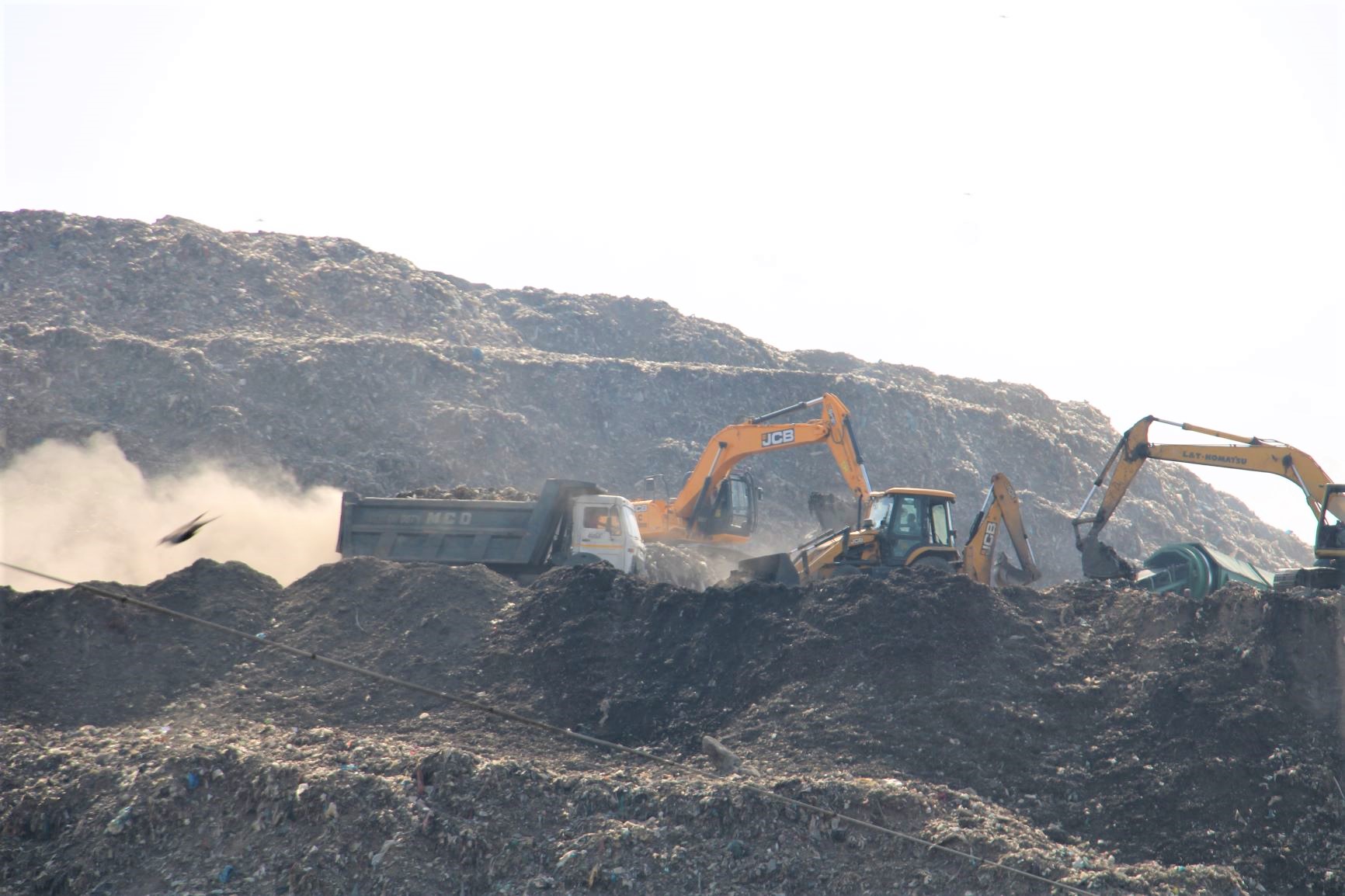Ever-growing garbage hills of Delhi

At the last count in 2019, the Ghazipur landfill had crossed 65 meters, just eight meters short of the iconic Qutub Minar (MIG Photo/ Varsha Singh)
Hawks, vultures and other birds hover around the towering Ghazipur landfill on the eastern fringe of Delhi. Stray cows, dogs and rats wander at will over the huge expanse of filth that covers an area of over 70 acres. Ghazipur garbage hill, which was once a landfill, rises by nearly 10 meters a year with no end in sight to its foul-smelling growth.
According to news reports, two people were killed and four vehicles fell into a drain after a part of the landfill site collapsed in 2017. The landfill site, commissioned in 1984 reached its capacity in 2002 and since then it has been overflowing, turning into a hill as garbage continues to be dumped here in the absence of an alternate option.
At the last count in 2019, the landfill had crossed 65 meters, just eight meters short of the iconic Qutub Minar, which is 73 meters high.
An east Delhi municipality officer admits that way back in 2019, the National Green Tribunal had directed the municipal bodies to biomine the infamous garbage hills at Okhla, Bhalswa, and Ghazipur.
“In 2018 too, a section of the hill collapsed in heavy rains killing two people. Dumping was banned after the deaths, but the measure lasted only a few days because authorities could not find an alternative,” he informs. However, he could not explain why the work so not being done regularly or at a faster pace.
Hazardous Impact of the garbage hill
A study by researchers at IIT-Delhi in 2019, published in the Journal of Hazardous, Toxic and Radioactive Waste, pointed out the hazardous nature of this landfill. Through multiple mined samples from three landfills in different parts of India, including the one at Okhla, situated in south Delhi, the study determined the presence of dangerous levels of toxicity in the leachate, a dark-coloured liquid produced when water seeps through garbage, produced from such excavated and processed landfill material.

More and more garbage keeps piling up every day and the trash hill continues to grow as the city’s detritus keeps on arriving each day in hundreds of trucks (MIG Photo/ Varsha Singh)
The exercise of biomining and bioremediating the landfills was ordered by the National Green Tribunal following the reported success of similar work carried out by the Indore Municipal Corporation at its landfill site. The tribunal instructed three municipal corporations of Delhi to begin the project on their landfills, including that of Ghazipur, by October 2019 and finish clearing them within a year.
However, more and more garbage keeps piling up every day and the trash hill continues to grow as the city’s detritus keeps on arriving each day in hundreds of trucks.
Shambhavi Shukla, senior researcher at the Centre for Science and Environment in New Delhi, says the methane belching from the garbage can become even more deadly when mixed with the atmosphere. Leachate liquid oozes from the dump and mixes into a local canal that pollutes groundwater in the area.
“It all needs to be stopped as the continuous dumping has severely polluted the air and groundwater,” she says.
Making life miserable for locals
Residents say the dump often makes their daily lives difficult. “The poisonous smell has made our lives hell. People fall sick all the time,” says a 45-year-old local, Puneet Sharma. He adds that complaints to the municipality are often ignored and now many residents are leaving the area, especially since the past few months as the amount of biomedical waste has increased.
He goes on to say that setting up a plant that recycles waste into energy next to the dump increases their misery because the smoke it releases by burning trash is also poisonous. “Fires sparked by methane gas coming from the dump, regularly break out and take days to extinguish. The overflowing landfill stinks, making the lives of locals unbearable and even becomes a hub of infections and diseases like dengue and malaria every year, especially during monsoon,” Sharma adds.
In July 2020, former cricketer and East Delhi BJP MP Gautam Gambhir said that the hill would be cleared when he received lots of complaints from locals and politicians about biomedical waste related to Covid-19 being dumped there from various hospitals in and around Delhi. “The work had started and we could see the height of the garbage hill decreasing gradually, but the process did not last long. Since December last year, again it has started rising again. We are planning to write to the chief minister but in the meantime, we continue to suffer as the whole city dumps all kinds of hazardous waste here,” he adds.









